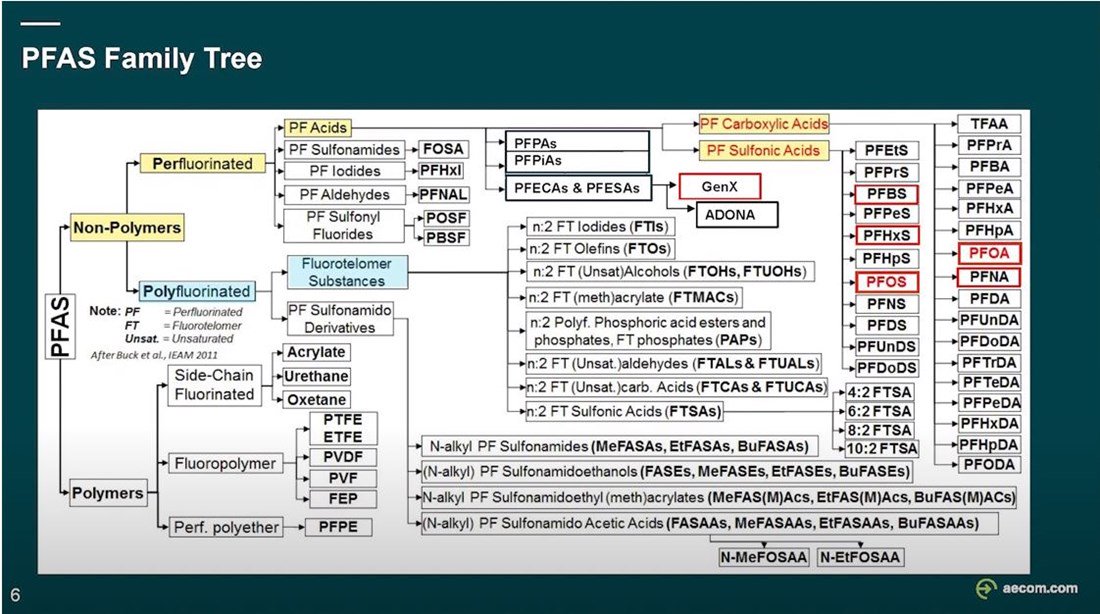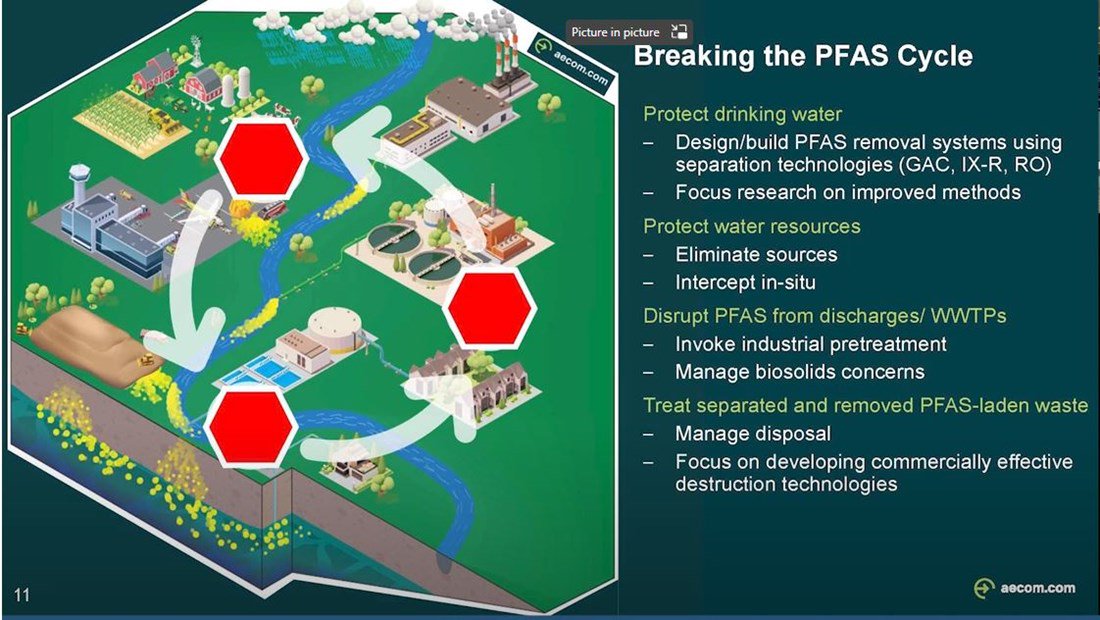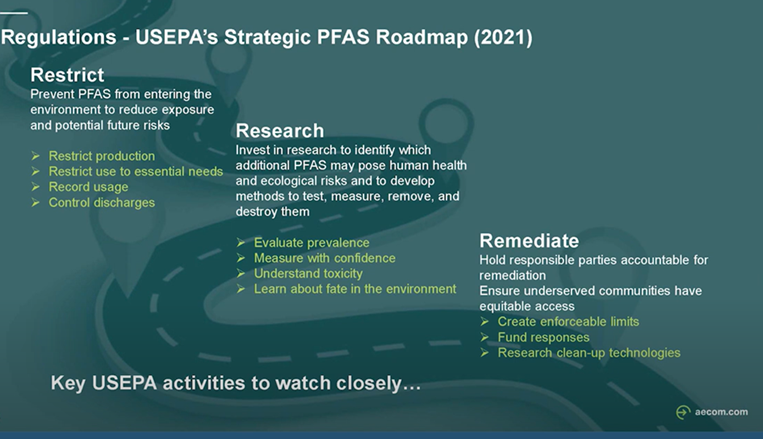At a summit organized by the Metropolitan Washington Council of Governments (COG) and hosted at DC Water Headquarters in honor of World Water Day, water utility professionals, researchers, environmental advocates and experts, and local government staff gathered to learn more about the potential harmful effects of per- and polyfluoroalkyl substances (PFAS), their presence in the environment, and regulatory and policy implications as the region continues to ensure safe and clean water for residents.
The summit closely followed the U.S. Environmental Protection Agency’s announcement of a proposed first-ever national drinking water standard for PFAS.
PFAS are man-made compounds used in industry and consumer products worldwide that enter the environment and water cycle, named “forever chemicals” because they break down slowly over time. This broad family of chemicals has many applications -- PFAS are used to manufacture non-stick cookware, fire suppressants used by emergency personnel, food packaging, and more.
As a result of the manufacturing process and consumer use and disposal of products, varying levels of PFAS are found in water, air, and soil. Much is still unknown about the effects of various PFAS on the human body, but the presence of these chemicals poses an additional challenge to the protection and preservation of the region’s water supply.

PFAS Family Tree. Courtesy of AECOM.
“The water industry is facing several new and growing threats to our drinking water and our communities. In addition to our aging infrastructure, accelerated climate change, our service line replacements, microplastics, we must now address contamination from PFAS,” said Kirsten Williams, Chief Communications & Stakeholders Engagement Officer and Executive Vice-President for DC Water.
In her opening remarks at the summit, Fairfax County Supervisor and COG Board Member Penelope Gross reflected on the shifting challenges of protecting the region’s water sources, and how close collaboration among regional leaders has brought effective solutions to dynamic and difficult crises, including the restoration of the Chesapeake Bay and historic droughts.
“In 1999, the regional drought brought into keener focus the need for local jurisdictions to work collaboratively rather than as adversaries. Water is a precious resource shared by all. Its protection is up to all of us, too,” Gross implored.

Breaking the cycle of PFAS in our water sources. Courtesy of AECOM.
PFAS are difficult to remove once in water, requiring high energy levels and temperature to destroy the compounds. This presents a significant challenge for water utilities during the water treatment process, as traditional methods for drinking water treatment are mostly incapable of removing PFAS, explained Dr. Joseph Jacangelo of Johns Hopkins University Bloomberg School of Public Health.
These challenges are critical to consider as lawmakers look towards the regulation of PFAS, several of the summit’s speakers agreed, with utilities grappling with design, fiscal, and operational constraints to remove PFAS once these chemicals have entered the water supply.
Instead, subject matter experts, like Dr. Linda S. Lee, Distinguished Professor of Agronomy, Environmental and Ecological Engineering at Purdue University, shared that an effective regulatory approach would be to take a holistic look at the life cycle of PFAS, leveraging a combination of tools to restrict problematic PFAS, limit production to essential uses, follow the data, and weigh all benefits and costs during regulatory decision-making.
“Solving PFAS at the front-end is more efficient than at the back-end,” Lee explained, referring to the difficulties of removing PFAS from water sources after contamination has occurred.

Proposed response for PFAS regulations. Courtesy of AECOM.
The need for robust and clear communication to members of the public about the impact of PFAS was emphasized several times throughout the summit, as new and emerging information about such a complex topic can lead to confusion and the spread of inaccurate information throughout communities.
“You’ll hear people say that PFAS are everywhere, they’re not actually everywhere, we’ve taken many samples that have had no PFAS in them. But they’re in a lot of places they shouldn’t be,” said Dr. Rosa Gwinn, Global PFAS Technical Lead at AECOM, in her overview of PFAS provided at the start of the summit, further explaining that “for some PFAS we have good data on their toxicity, but there’s thousands of them. That in itself is a burden to society to figure out the impact.”
COG’s Water Resources Program has been conducting weekly calls with area governments and utilities to discuss the dissemination of new information on PFAS and develop a unified and understandable message for the public.
The PFAS Summit was part of COG’s 2023 Water Policy & Science Series to facilitate regional collaboration on issues impacting the region’s water supply.
More: Watch the full PFAS Summit.